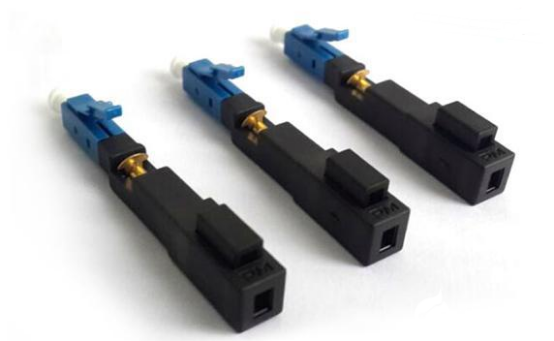How does the fiber optic connector work?
Optical fiber connector is an indispensable device for connecting various devices in the optical fiber communication system, and it is also the most used optical fiber device at present. Generally, the main optical characteristic indicators that measure the quality of fiber optic connector products are insertion loss and return loss. In addition, physical characteristics such as geometric parameters of the ferrule end face that affect product quality reliability are also valued. Based on the working principle of optical fiber connectors, will briefly introduce the insertion and return loss of the connectors.
The optical fiber connector cannot be used alone. It must be mated with other connectors of the same type to form the connection of the optical path. At present, the more popular optical fiber connector assembly and docking method is: use epoxy resin thermal curing agent to bond the optical fiber It is fixed in the ceramic pin hole and positioned by the adapter sleeve to realize the optical fiber docking. Insertion loss is caused by the lateral deviation between two consecutive optical fibers, the longitudinal gap in the fiber connector, and the quality of the end face.

It can be seen that ensuring that the two optical fiber cores in contact are in line is the key to ensuring the excellent connection quality of the connector. It mainly depends on the physical properties of the optical fiber and the manufacturing accuracy of the connector pin, and the assembly of the connector Processing accuracy, meanwhile, the optical performance index of the optical fiber and the polishing quality of the pin end face also have a direct impact on the optical performance and reliability of the connector. Insertion loss refers to the optical power attenuation caused by the connected connector (that is, the relative reduction of the output power of the optical connector relative to the input power).
Insertion loss is mainly caused by the lateral deviation between two optical fibers that are connected in succession. If the two optical fibers are lined up and the lateral deviation is zero, the insertion loss caused by it is the smallest. But in the actual docking process of the connector, this is unlikely to be achieved because the core and the fiber cladding are not concentric, the fiber cladding and the pin inner hole are not concentric, and the pin inner hole and the outer diameter are concentric Degree error, etc., will cause lateral deviation between the fibers.
At the same time, the longitudinal gap and end surface quality in the optical fiber connector are also one of the factors that cause insertion loss. The UPC plug contact method commonly used in recent years has solved the problem of longitudinal gap. In this way, the ferrule and the end face of the optical fiber are spherically polished, so that the two opposing ferrules are meshed together under the action of external force, so that the apex of the engaged optical fiber is deformed and flattened, and the optical fiber is fully butted, reducing the fiber joint Longitudinal gap.
Return loss is a parameter used to measure the amount of retroreflected light at the end of a connector. The essence of the echo is light reflection. According to the principle of Fresnel reflection, Fresnel reflection occurs when light encounters two interfaces with different refractive indexes during transmission, causing signal superposition or interference in the optical path. In single-mode fiber systems with high transmission rates, especially CATV systems, the reflection phenomenon will cause a time lag in the transmitted signal, delaying the time the signal reaches the user, and causing ghosting and sharpness of the image.
The UPC contact method of the connector connector reduces the gap between the connecting end faces, in addition to reducing the insertion loss, it also reduces the reflection of the connecting end face and improves the return loss; for users such as CATV systems, the APC type The contact method is a better choice: because the spherical normal of the ceramic ferrule end face of the APC connector has an angle with the fiber axis (generally 8 °), the light reflected from the end face escapes without returning to the core. Thereby greatly improving the return loss of the connector.
In summary, for excellent connector jumper manufacturers, in order to ensure the high quality of the product, three factors are essential. They are high-quality tight-fitted fiber optic cable, high-precision ceramic pin and Assemble spare parts, and excellent assembly processing technology.
If you want to know more, our website has product specifications for connector, you can go to ALLICDATA ELECTRONICS LIMITED to get more information

